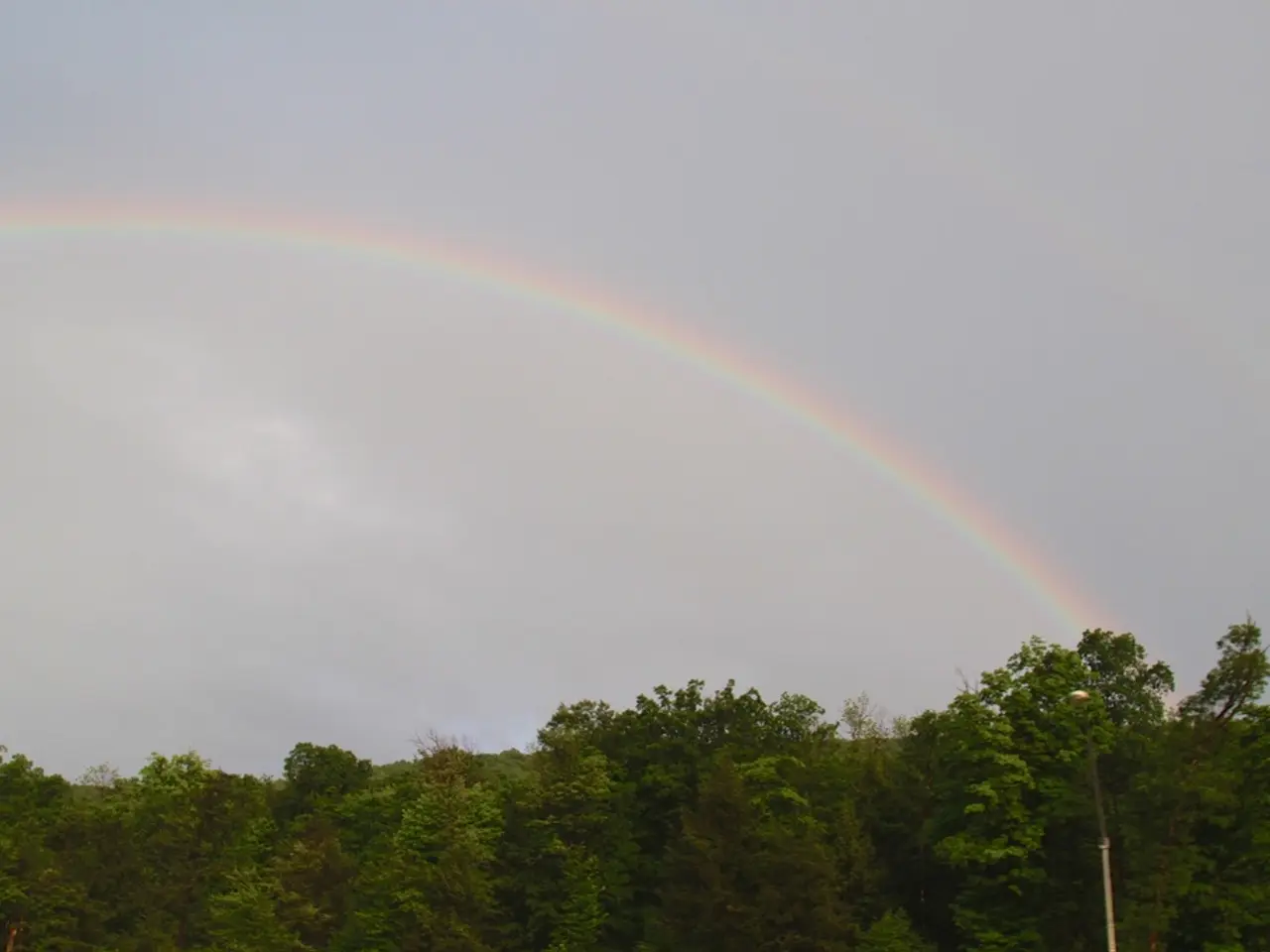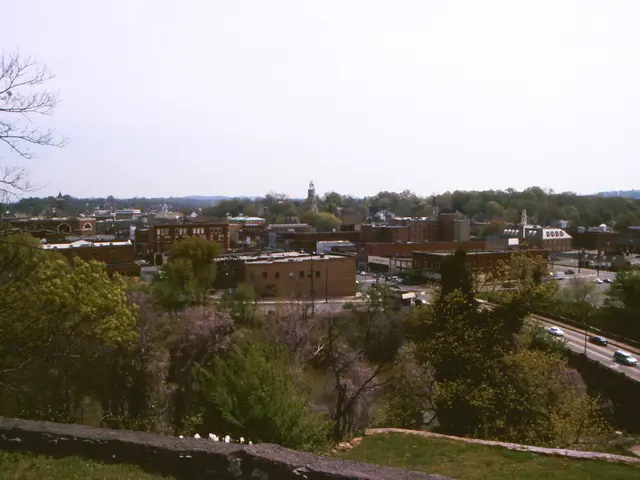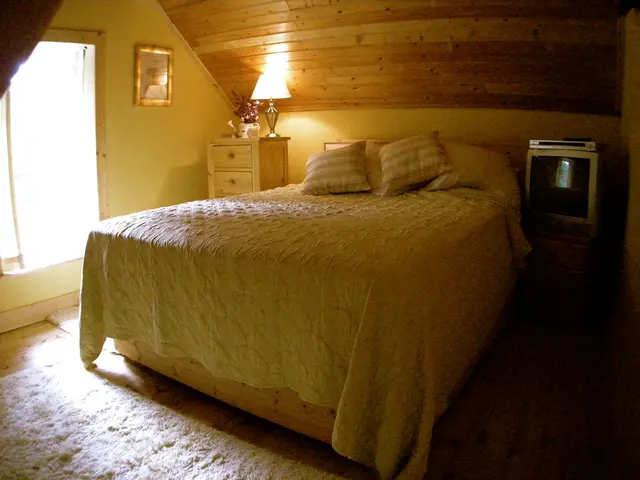Guide for Creating a Rainbow with a Prism
Rainbows, those vibrant arcs of colour that often appear after a rain shower, are a captivating natural phenomenon. But did you know that you can create your very own rainbows at home using simple household items? This article will guide you through the fascinating process of light refraction and show you how to make rainbows using everyday objects.
Light refraction is the bending of light when it passes from one transparent medium into another denser medium, causing the light to slow down and change direction. This bending depends on the wavelength (colour) of the light; shorter wavelengths (violet/blue) bend more sharply than longer wavelengths (red).
One of the most popular methods to create a rainbow at home is by using a prism or crystal with sunlight. The longer the prism, the more vibrant the rainbow in a prism rainbow. You can find many prisms in craft stores or even use a glass or crystal you have at home. Another way to create a rainbow is by shining sunlight onto a CD. The grooves on the CD act like a prism, splitting the white light into its rainbow colours.
Encouraging children to experiment with bending light using flashlights can help them explore how light interacts with different objects and surfaces. Creating shadow puppets or using different objects to see how light moves and changes is a fun way to explore light science with a flashlight.
In a flashlight, water, and paper rainbow setup, a rainbow appears on a white paper when light moves from air to water and bends. This simple yet effective experiment demonstrates the power of light refraction and can be a great introduction to the subject for children.
For those interested in participating in scientific research projects, a citizen science guide is available. A printable science project pack is also available for further exploration of various scientific topics. Setting up a simple mirror activity for preschool science and using printable color wheel worksheets can help introduce and reinforce scientific concepts.
Making a color wheel spinner, an easy DIY spectroscope, a simple DIY kaleidoscope, or using water droplets as "lenses" to bend light and change how things look are additional light science activities. Laying a CD on a blank white piece of paper and using colored pencils to match the colours reflected creates a fun combination of science and art.
In conclusion, creating rainbows at home is an engaging way to learn about light science. By understanding the process of light refraction and experimenting with various household items, you can bring the beauty of rainbows into your own home and foster a love of science in children. So, gather your materials and get ready to create your very own rainbows!
- Kindergarten students can learn about light science by creating their own rainbows at home with simple household items, such as a prism or CD.
- Encourage kids to experiment with flashlights to observe how light interacts with different objects and surfaces, making it more fun and engaging.
- For a hands-on preschool science project, set up a flashlight, water, and paper rainbow experiment to demonstrate the power of light refraction.
- If you're interested in scientific research, consider participating in citizen science projects or downloading a printable science project pack for further exploration.
- For reinforcement of scientific concepts, use printable color wheel worksheets in preschool activities or introduce your kids to DIY spectroscopes and kaleidoscopes.
- Engage in additional light science activities by making a color wheel spinner, a simple DIY kaleidoscope, or using water droplets as "lenses" to bend light.
- Mixing art with science, lay a CD on a blank white piece of paper and have kids draw the reflected colors using colored pencils.
- By understanding the process of light refraction through rainbow making, you can bring the beauty of science to your lifestyle, home-and-garden, and education-and-self-development.
- Creating rainbows at home is not only a fascinating learning experience but also an excellent way to foster a lifelong love of STEM (science, technology, engineering, and math) in children.
- Invite your kids to join the world of light science and be ready to stimulate their curiosity through hands-on, engaging activities that involve fun, projects, experiments, and creative art.




